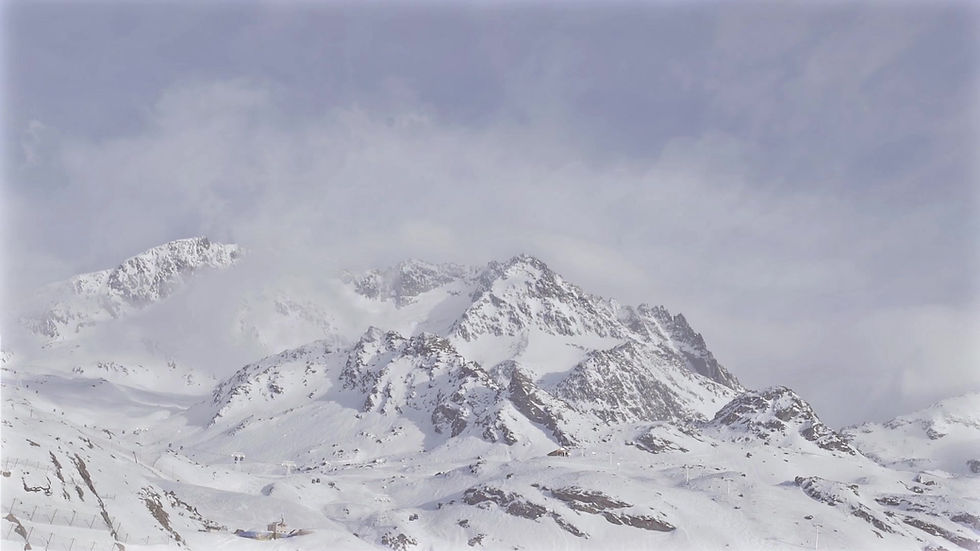
Earth 大地
for Soprano, Bass Baritone and Ensemble with live dance (2010-12)

Lucy Shelton, soprano; Evan Hughes, bass baritone;
Jeremy Gill, conductor; Dolce Suono Ensemble;
Tim Early, choreographer; Tim Early, Brittany Flaherty-Ryan, dancers;

Duration:
[ca. 55']
Instrumentation:
A Song Cycle for Soprano, Bass Baritone and Ensemble
Premiere:
Premier Performance: Lucy Shelton, soprano; Evan Hughes, bass-baritone;
Jeremy Gill, conductor; Dolce Suono Ensemble
Choreographer/Dancer: Tim Early and Brittney Flaherty-Ryan
Commissioner:
Commissioned by Dolce Suono Ensembl and the Koussevitzky Music Foundation with additional grant from NewMusicUSA
Notes about the piece
I have long admired Gustav Mahler's Das Lied von der Erde ("The Song of the Earth") for Tenor and Alto (or Baritone) Voice and Orchestra. Four of the eight poems (1, 3, 4, and 5) that he adopted for the text are written by Li Bai (701-762 C.E.), a prominent Tang Dynasty poet known for his expressive and evocative depictions of nature. The other poems come from renowned Tang poets such as Qian Qi, Meng Haoran, and Wang Wei. For Mahler, the text served as a vehicle for his profound, metaphysical musical meditation. As the German translation of the poems was employed in Das Lied von der Erde, I use the same texts in the original Chinese in all the movements and some combined with German and English, and I hope to imbue my adaptation of these poems with similar grace and depth.
My work is written for soprano and bass-baritone voices, sextet (flute/alto flute, clarinet/bass clarinet, percussion, piano, violin and cello), and dancers. It contains four movements: Song of Sorrow (poem 1), Song of a Lonely Autumn Night (poem 2), Song of Youth and Beauty (poem 3 and 4), and Song of the Drunkard (poem 5). In between the first and second, second and third, and after the fourth movement, I used two short interludes and a postlude to connect the main movements, Interlude I (poem 6), Interlude II (poem 7), and Postlude (poem 8). These last three poems in the three interludes are farewell poems, which are spoken by the instrumental musicians instead of the singers. The harmony of the piece is built entirely on Messiaen's modes of limited transposition. Based on these modes, I created a series of symmetrical chords for the first, second and fourth movements as the basis of the harmonic structure of these movements. I liken this to water and its symmetrical reflection, which has become an important element in many of my works.
"Song of a Lonely Autumn Night" corresponds to my favorite movement of Das Lied von der Erde, and my intention was to retain some of Mahler's musical language in my piece, though greatly compressed to fit the chamber ensemble. I integrate material drawn from the Mahler with atonal elements inspired by Schoenberg's Pierort Lunaire and other other music of his atonal/pantonal period. The vocal line includes quotations from Mahler as well as Sprechgesang (spoken singing) in the style of Schoenberg. The piano part opens with a quotation from the last movement of Schoenberg's Sechs Kleine Klavierstücke, Op.19 (Six Little Pieces) for piano solo, which Schoenberg composed as homage shortly after Mahler's death. I treat this motif according to Schoenberg's serial technique, with inversion, retrograde, transposition, retrograde inversion, and so on. My goal is to merge the two worlds of Mahler and Schoenberg together by juxtaposing mostly dissonant vocal and piano lines with a mostly consonant, tonal instrumental fabric.
I began creating Earth in November 2010 and finished in March 2013. It was commissioned by the Philadelphia-based Dolce Suono Ensemble with grants from the Serge Koussevitzky Music Foundation and Meet the Composer's 2010 Commissioning Music/USA program. I am grateful to these two organizations for valuing my music and supporting this project. I would like to especially thank the director of DSE, Mimi Stillman and her family for their kindest support over these years, and hosting me at their lovely home. I would also like to thank Lucy Shelton who has devoted herself wholeheartedly to this piece, providing invaluable advice throughout my creative process. And I'd like to thank all the musicians involved in this project, bass baritone Eric Owens (for the premier of Song of Sorrow in 2011), Evan Hughes (for the premier of the whole piece in 2013), conductor Jeremy Gill, Doris Hall-Guiati, Julie La, Nathan Vickery, Amy Yan, and Gabriel Giobus-Hoenich, and Choreographer/dancer Tim Early and Brittney Flaherty-Ryan. They are responsible for making my music come live from the page to the stage. Finally, I thank Richard Belcastro, Caitlin Flaherty, and Delaware County Community College for hosting the premier of this piece, which was taken place on April 14, 2013.
April 2013



